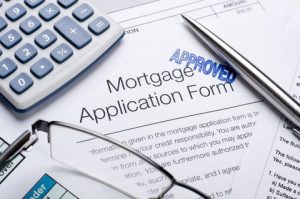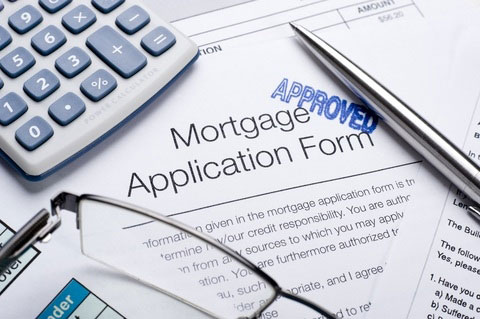If you’re thinking about buying your home through the Governments Right to Buy scheme, then The Money Hub is here to help! We have put together a Right to Buy Mortgage guide with tips on the buying process, how much you can borrow and the costs involved. Understanding the ins and outs of Right to Buy mortgages can seem daunting, but we hope that our ultimate guide will be useful and help to break down the process for you.
What is the Right to Buy Scheme?
 The Right to Buy scheme is offered to council tenants where, if they qualify, they can purchase their homes at a discounted price. This discount can be used as part or all of your deposit depending upon which mortgage lender you use.
The Right to Buy scheme is offered to council tenants where, if they qualify, they can purchase their homes at a discounted price. This discount can be used as part or all of your deposit depending upon which mortgage lender you use.
The Right to Buy scheme is currently only available in England.
How much discount will I get?
The discount offered on the scheme will depend upon many factors such as;
- How long you have been a tenant for
- The type of property you are buying
- The value of the property
There is an online government Right to Buy calculator which you can visit to give you an estimate of your potential discount.
Please be aware that if you do decide to sell the property within the 1st 5 years of buying it, you will usually have to repay some of the discounts back to the council.
What lenders offer Right to Buy Mortgages?
Many high street banks and building societies offer Right to Buy mortgages and to qualify for them you will need to have a good credit profile.
If you have had bad credit registered in the past such as missed payments, defaults, or county court judgments, there are specialist mortgage lenders who can help and these mortgages are generally available through mortgage brokers.
These cases are more complex and more questions are asked around the bad credit such as when was the bad credit registered, why it was registered, what type of bad debt was it (mobile phone, credit card, or loan), and if it is now settled.
How much can I borrow on a mortgage?
Lenders typically lend 4 to 4.5x your income however there are many other factors lenders need to take into consideration, for example;
- How long do you want the mortgage for?
- How is your income made up?
If you get a lot of your income through commission or overtime the lender may not take into account all this additional income. If you have any financial commitments such as loans or credit cards these will also have an impact on how much you can borrow.
Your mortgage adviser will carry out a full income and expenditure review to make sure any new mortgage is affordable over the term of the mortgage.
What documents would be needed?
The mortgage adviser and the lender will require many documents from you to prove your identity and to prove that the new Right to Buy mortgage is affordable. Here is an overview of the documents required:
Credit Report
The credit report will be asked for straight away by the broker. The main 2 credit agencies are Experian and Equifax. You can go directly to them and sign up to obtain your credit report. There is a company called Check My File which shows data from both Experian and Equifax which is ideal as sometimes lenders don’t always report your credit activity to both agencies.
Proof of Identity
You will need to provide proof of identity; this will be your Passport or Driving License. Make sure that they are still valid and that the driving license is at your current address.
3 Month’s Bank Statements
The 3 months’ worth of bank statements will be used to review your account conduct and to get a clear understanding of your regular expenditure. With this information, you will be able to understand if the new mortgage is affordable.
Proof of Income
If you are employed, the lender will typically request your last 3 months’ worth of payslips and the latest P60. If you are self-employed, you will be required to provide at least your latest tax calculations and tax overview of your accounts.
Lender Documents
Depending upon the lender you are proceeding with, they may want an application form completed and additional declaration forms also. Please note that the lender always has the right to ask for additional information.
What Costs are Involved?
When buying a property through the Right to Buy scheme, many fees will be payable at different stages throughout the process. Here you will see a breakdown of the fees payable and when they tend to be due throughout the process:
Valuation Fee – This is payable upfront, and it is for the property you wish to buy to be valued by an independent surveyor to make sure the property is suitable security for the lender to lend against. The lender will want a basic valuation done; however, you could arrange for a more in-depth valuation to be carried out such as a Homebuyer Survey or a Full Structural survey.
Broker Fee – This is to cover the services provided by your chosen broker. The fee may be payable at various stages through the process for example upfront when a mortgage offer is issued or maybe on completion. Your chosen broker should clearly state what fees are payable and when from the start.
Conveyancing Fee – This is a fee the conveyancer will charge for their services and acting on your behalf to arrange the property purchase. They may want some of this paid upfront and some on completion. Searches need to be carried out on the property and you will generally have to pay for these also. The conveyancer should provide you with a quotation from the outset of what fees are payable and when.
Stamp Duty – As a first-time buyer, currently you do not need to pay stamp duty on properties purchased up to £500,000, however, this may change in the future. It is the conveyancer’s responsibility to advise you of any stamp duty costs applicable. You can also visit the government stamp duty calculator.
What are the steps to go through to buy your property?
Step 1 – Look online (Rightmove / Zoopla) to see what your property may be worth.
Step 2 – Visit the Right to Buy Calculator website to get an idea of how much discount you may be entitled to.
Step 3 – Most applicants will need a mortgage, so speak to a qualified mortgage adviser who is experienced in helping people purchase their property through the Right to Buy scheme.
Step 4 – Contact the government’s Right to Buy Agent Service who will talk you through the process and tell you which forms to complete.
Step 5 – The council will value your property.
Step 6 – The council will issue you your Right to Buy paperwork confirming the property value, discount available, the purchase price, and any other ongoing costs, i.e. service charges (if you live in a flat for example).
Step 7 – You have to sign the forms and return them to the council if you wish to proceed with the Right to Buy.
Step 8 – Apply for the mortgage. The mortgage lender will require documents such as payslips, bank statements, Proof of Identity, etc. A mortgage valuation will be required. You will need to instruct a conveyancer also.
Step 9 – Once the mortgage lender has completed all their underwriting and is happy with everything, they will issue a Mortgage Offer.
Step 10 – The solicitor will carry out their due diligence on the transaction, raise any enquiries, liaise with you, the council, and the lender to arrange a completion date.
How to arrange a Right To Buy mortgage with The Money Hub
The experienced advisers at the Money Hub would be happy to help answer any questions that you have and guide you through the home-buying process. To speak with one of our advisers please either give us a call or complete our enquiry form where you can schedule a telephone appointment.
DISCLAIMER: These articles are for information only and should not be construed as advice. You should always seek advice prior to taking any action.
